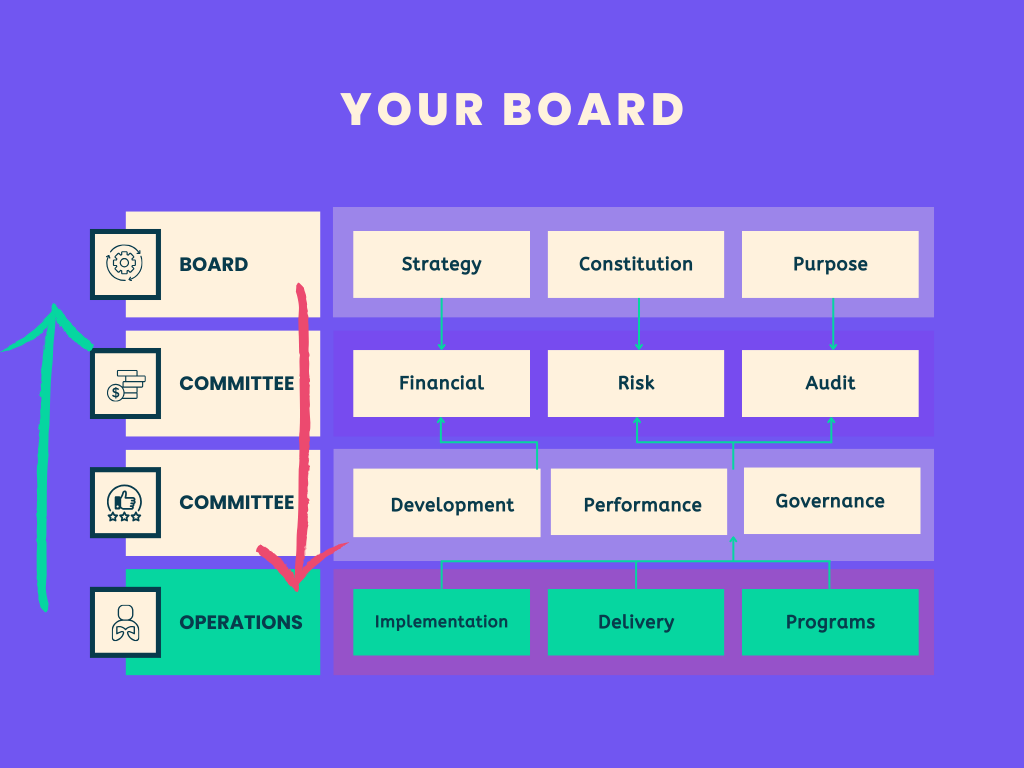10 best practices for boards
Running a not for profit or corporate board means governance and operational management are two distinct but interconnected aspects of organisational functioning. Here’s ten best practices and ways to work together effectively without crossing operational boundaries:
1 – Define Clear Roles and Responsibilities:
Ensure that there’s a well-defined understanding of the roles and responsibilities of both the board and operational management. This includes a delineation of decision-making authority and accountability.
Boards set the strategic direction, while operational management implements it. Be clear about who has the final say in specific matters.
2 – Regular Communication:
Establish a culture of open and regular communication between the board and operational management. This includes regular board meetings, strategic planning sessions, and operational updates.
Provide operational management with opportunities to present progress, challenges, and recommendations to the board.
3 – Align on Strategic Goals:
The board should work closely with operational leaders to ensure that strategic goals are clear, feasible, and aligned with the organization’s mission and vision.
Operational management should actively participate in shaping the strategic direction by offering insights and expertise.
4 – Mutual Respect and Trust:
Board members and operational leaders should respect each other’s expertise and contributions. Trust is essential for a productive working relationship.
Recognize that both board governance and operational management play vital roles in achieving the organization’s objectives.
5 – Constructive Feedback Loop:
Create a feedback mechanism that allows operational management to provide input on the feasibility and implications of board decisions.
Boards should be open to feedback and be willing to adapt their strategies based on operational insights.
6 – Avoid Micromanagement:
Boards should avoid micromanaging day-to-day operations. Instead, focus on high-level strategic decisions and trust operational management to execute them.
Operational leaders should provide the board with the information they need without overwhelming them with operational details.
7 – Regular Performance Evaluation:
Implement a system for regular performance evaluation for both the board and operational management. This ensures accountability and continuous improvement.
Performance metrics should align with the organisation’s strategic goals.
8 – Adherence to Governance Policies:
Ensure that operational management adheres to governance policies, such as financial reporting and ethical standards.
Boards should provide oversight to ensure compliance.
9 – Crisis Management Protocol:
Develop a clear protocol for handling crises. Define the roles and responsibilities of both the board and operational management during crisis situations.
Ensure that there’s a mechanism for swift decision-making and communication during crises.
10 – Continuous Learning:
Encourage both board members and operational leaders to engage in continuous learning and development to stay updated on industry trends and best practices.
Consider training and workshops on governance and management topics.
By following these best practices, you can foster a collaborative and effective working relationship between board governance and operational management, ensuring that both entities work together seamlessly toward the organisation’s success while respecting their respective roles and boundaries.

At Budduns, we understand the importance of board governance, and we can work with your organisation to align with your goals and objectives. Contact us today to learn more about how we can help you achieve project success.

